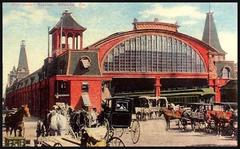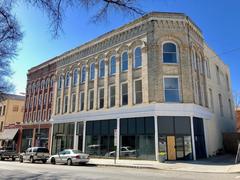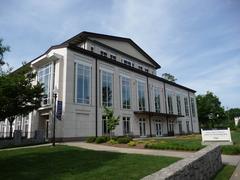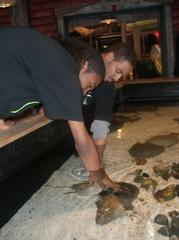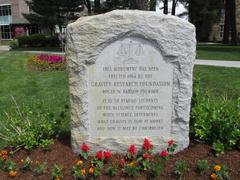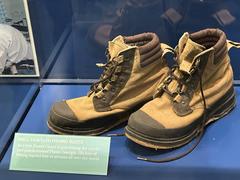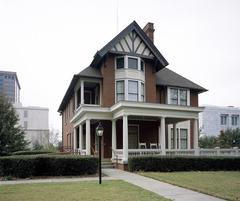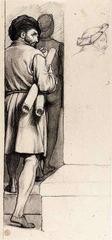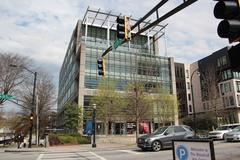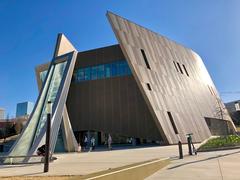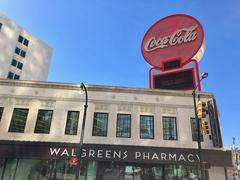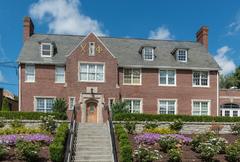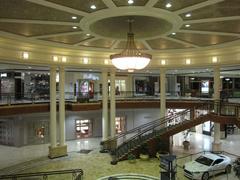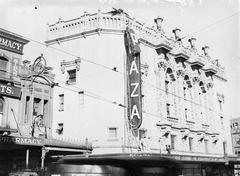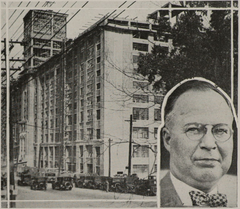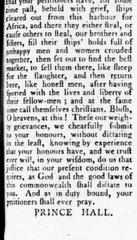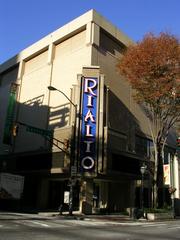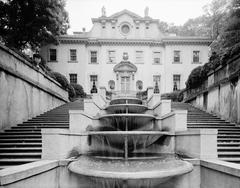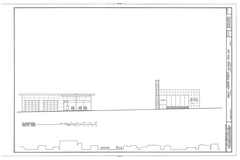
Loew’s Grand Theatre Atlanta: Visiting Hours, Tickets, and Historical Sites Guide
Date: 03/07/2025
Introduction
Loew’s Grand Theatre, a pillar of Atlanta’s entertainment and cultural history, once stood as a magnificent example of Beaux-Arts architecture and was the centerpiece of the city’s performing arts scene. Though demolished in 1978, its legacy lives on through preserved artifacts, commemorative markers, and educational exhibits. This comprehensive guide provides a detailed exploration of Loew’s Grand Theatre’s rich history, its enduring cultural impact, and practical tips for visitors eager to connect with Atlanta’s storied past. Whether you are an architecture enthusiast, film buff, or cultural tourist, this resource will enrich your understanding and experience of one of Atlanta’s most treasured icons (Atlanta History Center; Smithsonian Magazine).
Table of Contents
- History and Construction
- Golden Era and Major Events
- Decline, Fire, and Demolition
- Legacy and Cultural Impact
- Preservation, Memorials, and Artifacts
- Visitor Information: Sites, Hours, and Tours
- Nearby Atlanta Historical Sites
- Frequently Asked Questions
- Conclusion and Recommendations
- Sources
History and Construction
Loew’s Grand Theatre began its life in 1893 as DeGive’s Grand Opera House, reflecting Atlanta’s cultural aspirations during the post-Reconstruction era. Its Beaux-Arts design, with grand columns, ornate plasterwork, and a lavish auditorium seating over 2,000 people, made it a centerpiece of the city’s burgeoning entertainment district.
In 1927, the Loew’s chain acquired and renovated the theatre, introducing state-of-the-art projection equipment, improved acoustics, and air conditioning—an innovation at the time (Georgia Encyclopedia). Renamed Loew’s Grand Theatre, it was celebrated as Atlanta’s premier movie palace, transitioning from live stage productions to the latest cinematic experiences (Cinema Treasures).
Golden Era and Major Events
During the 1930s and 1940s, Loew’s Grand Theatre enjoyed its golden era, hosting operas, symphonies, vaudeville performances, and blockbuster films. Its most historic moment occurred on December 15, 1939, as the host of the world premiere of Gone with the Wind. The event attracted Hollywood stars, dignitaries, and over 300,000 fans, placing Atlanta in the international spotlight. The theatre’s role in this event cemented its reputation as a cultural landmark (Atlanta History Center; Smithsonian Magazine).
Decline, Fire, and Demolition
By the 1950s and 1960s, changing entertainment trends, suburbanization, and downtown decline led to reduced audiences for single-screen theatres like Loew’s Grand. The theatre attempted to adapt, but by the 1970s, it struggled financially and structurally.
A devastating fire in January 1978 destroyed much of the building’s ornate interior. Despite its listing on the National Register of Historic Places, the theatre was demolished later that year. Its site is now occupied by the Georgia-Pacific Center, a modern skyscraper symbolizing Atlanta’s urban renewal (Digital Library of Georgia; Atlanta Magazine).
Legacy and Cultural Impact
Though the theatre no longer stands, its legacy is felt throughout Atlanta. The premiere of Gone with the Wind remains a defining moment in the city’s history, while the theatre’s architecture influenced subsequent cultural venues. The loss of Loew’s Grand spurred preservation efforts, inspiring the protection of sites like the Fox Theatre and the Rialto Center for the Arts (Atlanta Preservation Center; Fox Theatre).
Artifacts salvaged from the theatre, such as its chandelier and bricks, are displayed in venues like The Tabernacle and Houston’s Restaurant. Archival materials and digital exhibits preserve its memory for future generations (GSU Library Exhibit).
Preservation, Memorials, and Artifacts
- Georgia-Pacific Tower (133 Peachtree Street NE): The theatre’s original site. While there are no public exhibits in the building, its exterior can be viewed at any time.
- Houston’s Restaurant (2166 Peachtree Road): Features bricks from the theatre and a commemorative plaque in the lobby. The plaque can be viewed during restaurant hours.
- The Tabernacle (152 Luckie Street NW): Houses a chandelier from Loew’s Grand, visible during concert events with a ticket.
- Archival Exhibits (Georgia State University Library): Digital collections and photographic archives are available online 24/7 (GSU Digital Exhibit).
Visitor Information: Sites, Hours, and Tours
- Viewing the Original Site: The Georgia-Pacific Tower is accessible from the street with no restrictions. There are no visiting hours or tickets required.
- Houston’s Restaurant: Open to the public, with the commemorative plaque in the lobby. Reservations are recommended during peak times.
- The Tabernacle: Access to the chandelier is available during ticketed events. Check event schedules for visiting opportunities.
- Guided Walking Tours: Several Atlanta heritage tours include stories of Loew’s Grand. Advance booking is recommended.
- Digital Resources: Online exhibitions and virtual tours are available through the Georgia State University Library (GSU Digital Exhibit).
Accessibility: Both Houston’s Restaurant and The Tabernacle are wheelchair accessible. Contact venues directly for specific accommodations.
Transportation and Parking: All sites are accessible via MARTA. Parking is available at each venue; consult local signage for details.
Nearby Atlanta Historical Sites
- Fox Theatre: A preserved historic venue hosting concerts, films, and tours (Fox Theatre).
- Atlanta History Center: Offers exhibitions on city history, including Loew’s Grand (Atlanta History Center).
- Martin Luther King Jr. National Historical Park: A significant landmark in Atlanta’s civil rights history.
- Georgia State Capitol and Rialto Center for the Arts: Additional points of interest for cultural tourists.
Frequently Asked Questions
Q: Can I visit the original Loew’s Grand Theatre building?
A: No, the theatre was demolished in 1978. The Georgia-Pacific Tower now occupies the site and can be viewed from the exterior.
Q: Are there guided tours about Loew’s Grand Theatre?
A: Yes, several walking tours and heritage experiences in Atlanta include the theatre in their itineraries.
Q: Where can I see artifacts from Loew’s Grand Theatre?
A: The chandelier is at The Tabernacle, while Houston’s Restaurant displays bricks and a commemorative plaque.
Q: Are the memorial sites accessible for visitors with disabilities?
A: Yes, both Houston’s Restaurant and The Tabernacle are wheelchair accessible.
Q: How can I access archival materials?
A: Georgia State University’s digital exhibits are available online 24/7 (GSU Digital Exhibit).
Conclusion and Recommendations
Loew’s Grand Theatre’s story is a testament to Atlanta’s resilience and cultural evolution. While the theatre itself no longer stands, its legacy endures through artifacts, commemorations, and educational resources. Whether exploring memorial markers, artifacts at local venues, or in-depth digital archives, visitors and locals alike can connect with a pivotal chapter in Atlanta’s artistic and urban history.
For the most immersive experience, combine visits to Houston’s Restaurant and The Tabernacle with online research, and consider joining a guided walking tour for expert storytelling. The upcoming mixed-use redevelopment of the Georgia-Pacific Center site promises to blend Atlanta’s historic legacy with its vibrant future (PR Newswire; World Construction Network).
For interactive maps, guided tour schedules, and exclusive content, download the Audiala mobile app and follow our social media channels for updates on events and special offers.
Visuals and Interactive Elements
- Images: Archival photos of Loew’s Grand Theatre’s façade and interiors, Gone with the Wind premiere, Georgia-Pacific Tower, and commemorative plaques (alt text: “Loew’s Grand Theatre historic exterior,” “Gone with the Wind world premiere at Loew’s Grand Theatre,” “Georgia-Pacific Tower at former Loew’s Grand Theatre site,” “Commemorative plaque at Houston’s Restaurant honoring Loew’s Grand Theatre”).
- Interactive Map: Pinpoints for the original theatre site, Houston’s Restaurant, The Tabernacle, and other historical sites.
- Virtual Tours: Available via GSU Library’s digital exhibit.
Sources
- Loew’s Grand Theatre and the Gone with the Wind Premiere (Atlanta History Center)
- Online Exhibitions: Loew’s Grand Theatre (Atlanta History Center)
- Loew’s Grand Theatre: From Atlanta’s Historic Movie Palace to the Georgia-Pacific Center Redevelopment (Digital Library of Georgia)
- Georgia-Pacific Unveils Plans for Historic Mixed-Use Redevelopment (PR Newswire)
- Georgia-Pacific Headquarters Conversion (World Construction Network)
- Visiting Loew’s Grand Theatre Legacy: History, Memorials, and Atlanta Historical Sites Guide (GSU Library Exhibit)
- The Atlanta 100: Loew’s Grand Theatre History
- Cinema Treasures: Loew’s Grand Theatre
- Georgia Encyclopedia: Loew’s Grand Theatre
- Smithsonian Magazine: Remembering the Premiere of Gone with the Wind
- Atlanta Preservation Center: Loew’s Grand Theatre
- Atlanta Magazine: Loew’s Grand Theatre and the Georgia-Pacific Tower





